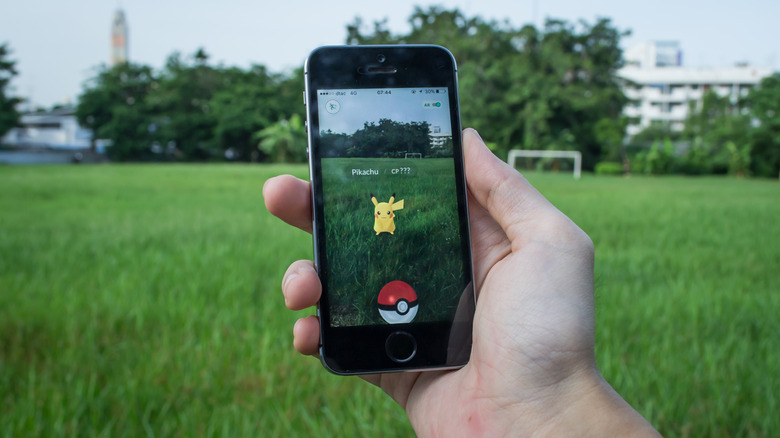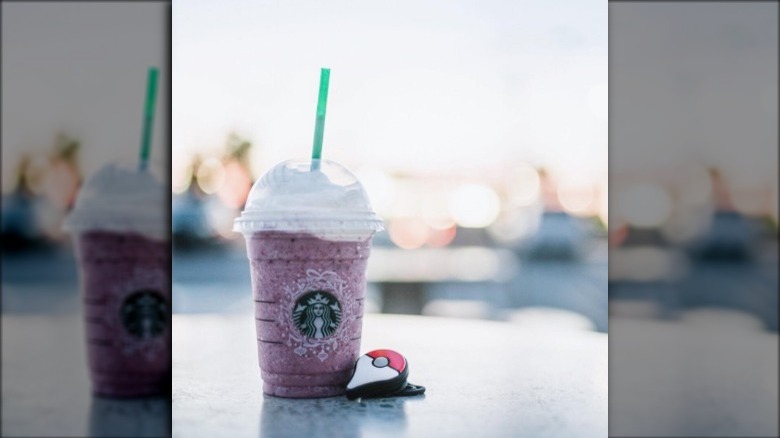The Starbucks Pokemon GO Frappuccino You Forgot Existed
Everyone remembers Pokémon Go, right? For years in the last decade, you could not go anywhere without having to weave between hordes of people clustered around possible Pokémon sites. But do you remember Starbucks' Pokémon Go Frappuccino?
In 2016, during the height of the craze, Starbucks did what every fast-food company does when a fad has society transfixed. They created a food product. As Starbucks announced in a press release at the time, the drink takes a Vanilla Bean Frappuccino and adds a raspberry syrup, freeze-dried blackberries, and a topping of whipped cream.
If that sounds tempting, Starbucks Secret Menu raises an exciting point: you can still order it. As long as the store has the ingredients, you can order any limited-time drink after its expiration date. And since none of the ingredients in the Pokémon Go Frappuccino are seasonal, you can order the drink year-round. Now you will never forget it.
You might have forgotten about the sinister side
The excitement over a new Starbucks drink can easily obscure a somewhat more suspicious side. The partnership between Starbucks and Niantic, the company that made Pokémon Go, went further than just a sugary drink.
"The physical locations component of the collaboration is important to us as we look for ways to use technology to encourage exploration, exercise and real world social interaction, and Starbucks' footprint throughout the U.S. provides an awesome platform," Niantic CEO John Hanke said in a statement shared with Gamespot. While the general phrasing is positive, one has to wonder what a company means when it wants to encourage exploration and social interaction. It's like Facebook's insistence that despite being a mega-corporation, it is primarily a community.
The implications were revealed in 2019 by Kotaku. Every minute you use a Niantic app, your every move is recorded up to 13 times a minute. The minutiae of the records was such that the writers could guess the daily habits of European players based on the data they wrested from the company with the EU's GDPR laws. Though the company denied placing more Pokémon within the stores of its sponsors, 13,000 PokéStops, places that serve various fundamental purposes in the game, were in Starbucks locations. That is unlikely to be a coincidence. These days, the news that a company will pay to reorder our daily routes would fail to shock. However, it's still something worth remembering as well.

